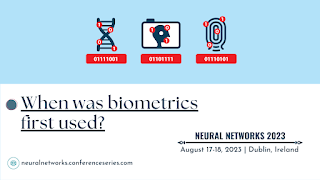When was biometrics first used?
In recent years, biometric authentication has
entered the mainstream; facial recognition on smartphones, technologies to
speed up the airport experience, finger print access to online banking apps, or
even biometric payment cards are just a few examples.
While it may appear to be a novel notion,
biometrics has been around for decades.
Biometrics can be traced back to ancient times
when fingerprints and handprints were used to sign and seal documents.
The application of biometrics as a tool for
identification and security purposes began in the late nineteenth century with
the work of Alphonse Bertillon. In 1879,
a French police officer established an anthropometry method that involves
measuring numerous physical traits such as height, weight, and the size of the
head, arms, and feet to identify criminals. This approach was widely utilized
by police agencies around the world and was regarded the gold standard for
identification until the early twentieth century.
In the early 20th century, the first
fingerprinting systems were developed and their use became widespread.
In the latter half of the twentieth century,
biometric technologies such as voice, iris, and facial identification were
created. These technologies became economically viable in the 2010s and have
been widely employed since then.
Different types of biometric identifiers:
- Iris
- Face
- Tone of voice
- Handwriting
- Vein pattern
- Gestures
Biometrics is now employed in a variety of
applications such as border control, law enforcement, access control, and
identity verification. With the use of advanced algorithms, machine learning,
and artificial intelligence, biometric systems have grown increasingly
sophisticated.
Biometric authentication is a security procedure
that uses an individual's unique biological traits to confirm they are who they
say they are. Biometric authentication systems compare physical or behavioral
characteristics to data that has been verified and saved in a database.




Comments
Post a Comment